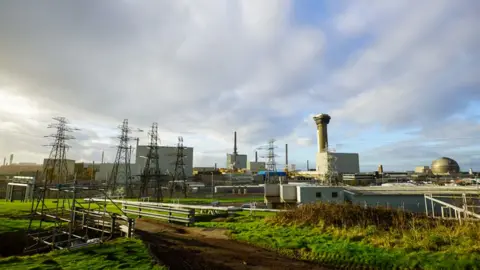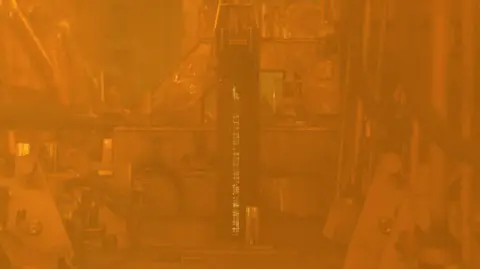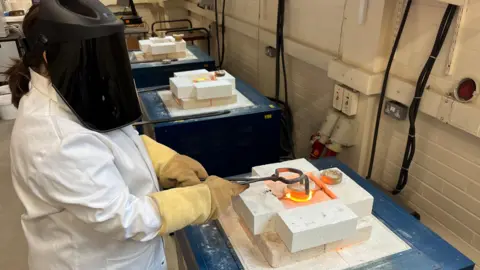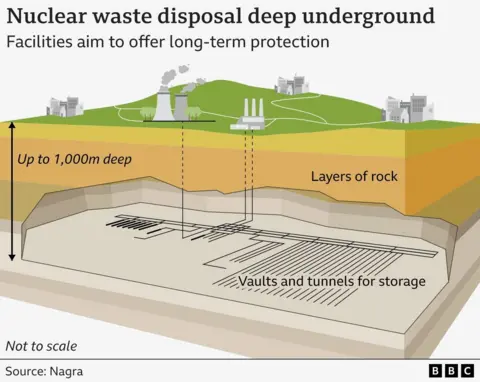Victoria Gill
Science correspondent, BBC News

 Getty Images
Getty Images
140 tonnes of plutonium is currently being stored at Sellafield, the nuclear site in Cumbria
The government says it will dispose of its 140 tonnes of radioactive plutonium - currently stored at a secure facility at Sellafield in Cumbria.
The UK has the world's largest stockpile of the hazardous material, which is a product of nuclear fuel reprocessing.
It has been kept at the site and has been piling up for decades in a form that would allow it to be recycled into new nuclear fuel.
But the government has now decided that it will not be reused and instead says it wants to put the hazardous material "beyond reach" and made ready for permanent disposal deep underground.

 Kevin Church, BBC
Kevin Church, BBC
Plutonium is a product of reprocessing spent nuclear fuel, seen here from behind lead-lined glass, which gives the scene a yellow tint
- Which rural area will take the UK's nuclear waste?
- Inside the 'town' behind Sellafield's security fence
When spent nuclear fuel is separated it into its component parts, one of the products is plutonium.
Successive governments have kept the material to leave open the option to recycle it into new nuclear fuel.
Storing this highly radioactive material - in its current form - is expensive and difficult. It needs to be frequently repackaged, because radiation damages the containers it's kept in. And it's guarded by armed police. All that costs the taxpayer more than £70m per year.
The government has made the decision that the safest - most economically viable solution - is to "immobilise" its entire plutonium stockpile.
That means that a facility will be built at Sellafield where the plutonium can be converted into a stable, rock-like material, which can eventually be disposed of deep underground.
In a statement, energy minister Michael Shanks said the objective was "to put this material beyond reach, into a form which both reduces the long-term safety and security burden during storage and ensures it is suitable for disposal".
Nuclear materials scientist Dr Lewis Blackburn from the University of Sheffield said the plutonium would be "converted into a ceramic material" which, while still radioactive, is solid and stable so it is deemed safe to dispose of.
"The type of ceramic remains to be decided [and selecting the right material] is the subject of ongoing research."

 Kevin Church, BBC
Kevin Church, BBC
A scientist demonstrates how nuclear waste can be 'baked' into solid materials like ceramic
Nuclear waste expert Prof Claire Corkhill from the University of Bristol said the goverment's decision was a "positive step".
She told BBC News that it paved the way to removing the cost and hazard of storing plutonium at Sellafield "by transforming it and locking it away into a solid, durable material that will last for millions of years in a geological disposal facility".
"These materials are based on those we find in nature - natural minerals, that we know have contained uranium for billions of years."
The government is currently in the early stages of a long technical and political process of choosing a suitable site to build a deep geological facility that will eventually be the destination for all of the country's most hazardous radioactive waste. That facility will not be operational until at least 2050.



 By BBC (Science) | Created at 2025-01-24 17:12:00 | Updated at 2025-01-24 23:08:25
6 hours ago
By BBC (Science) | Created at 2025-01-24 17:12:00 | Updated at 2025-01-24 23:08:25
6 hours ago




